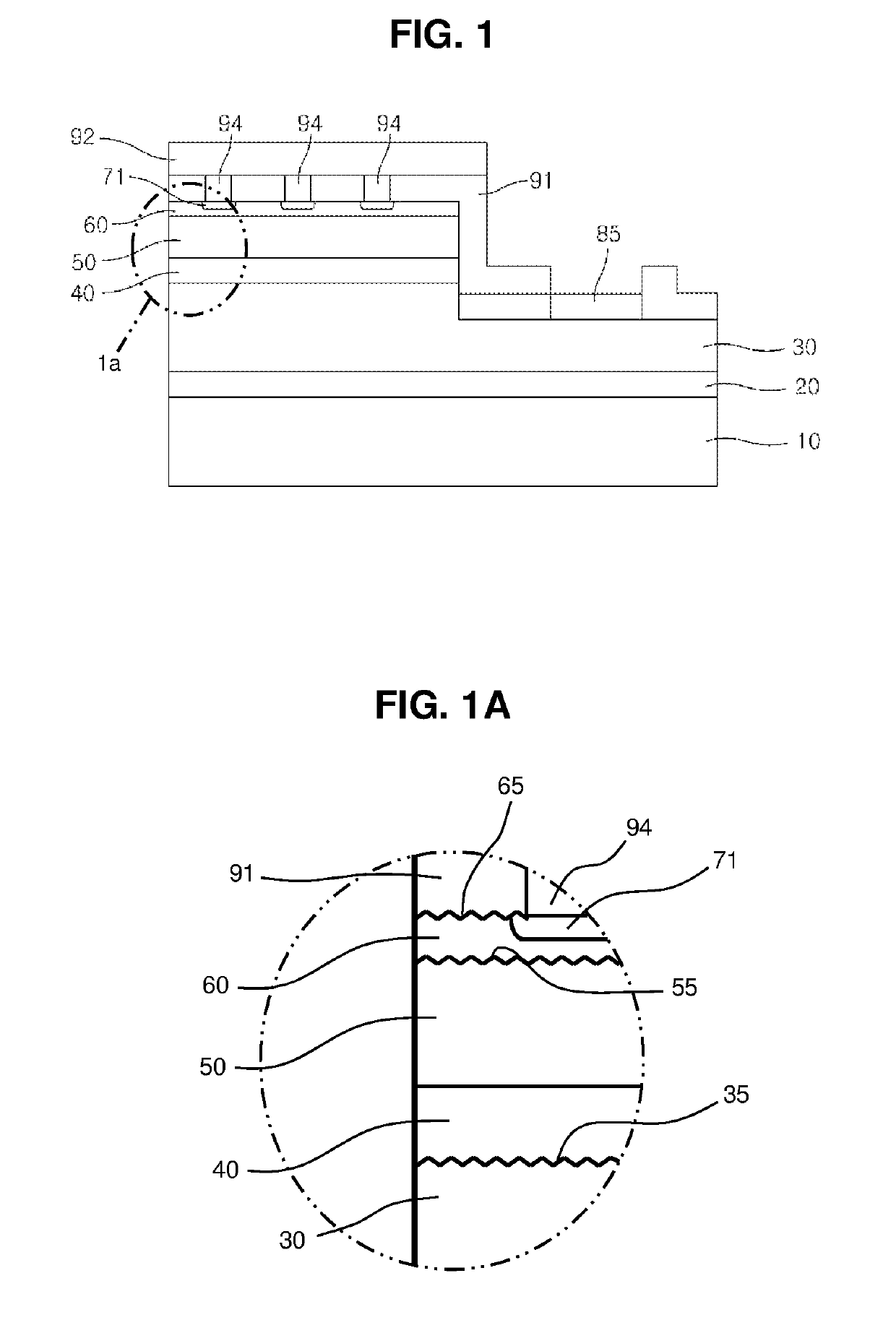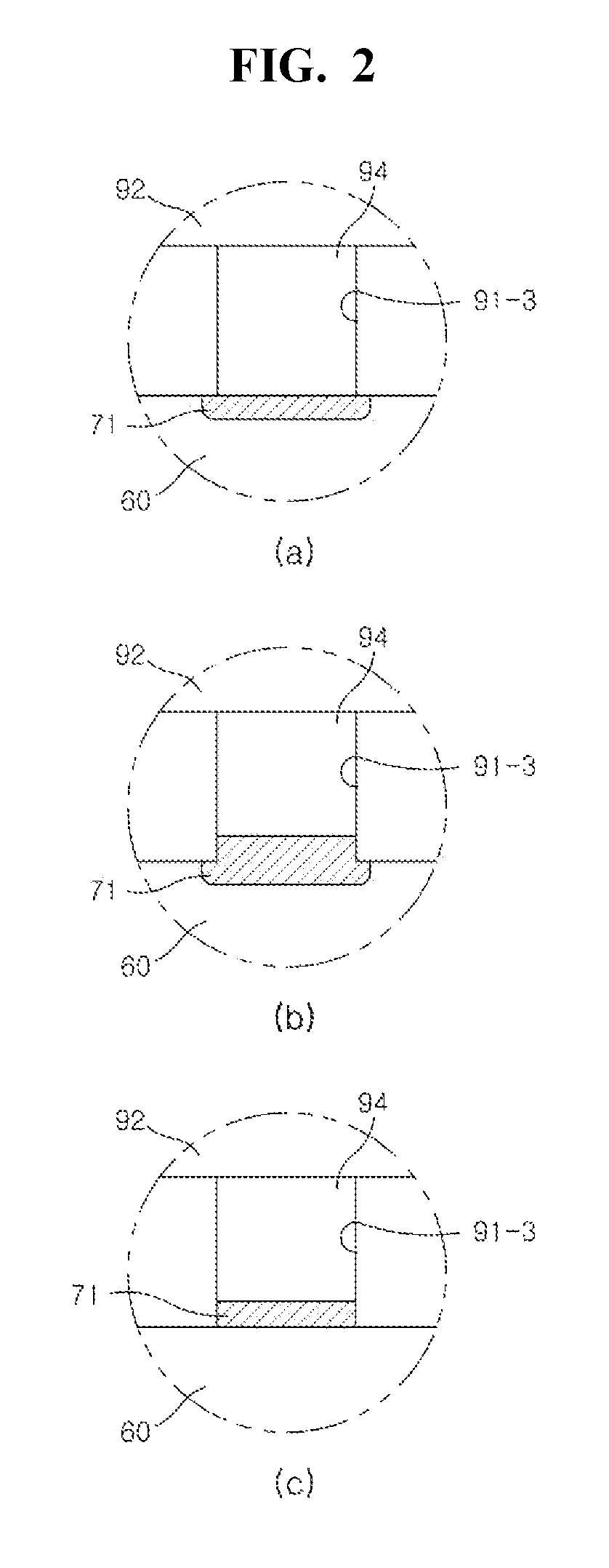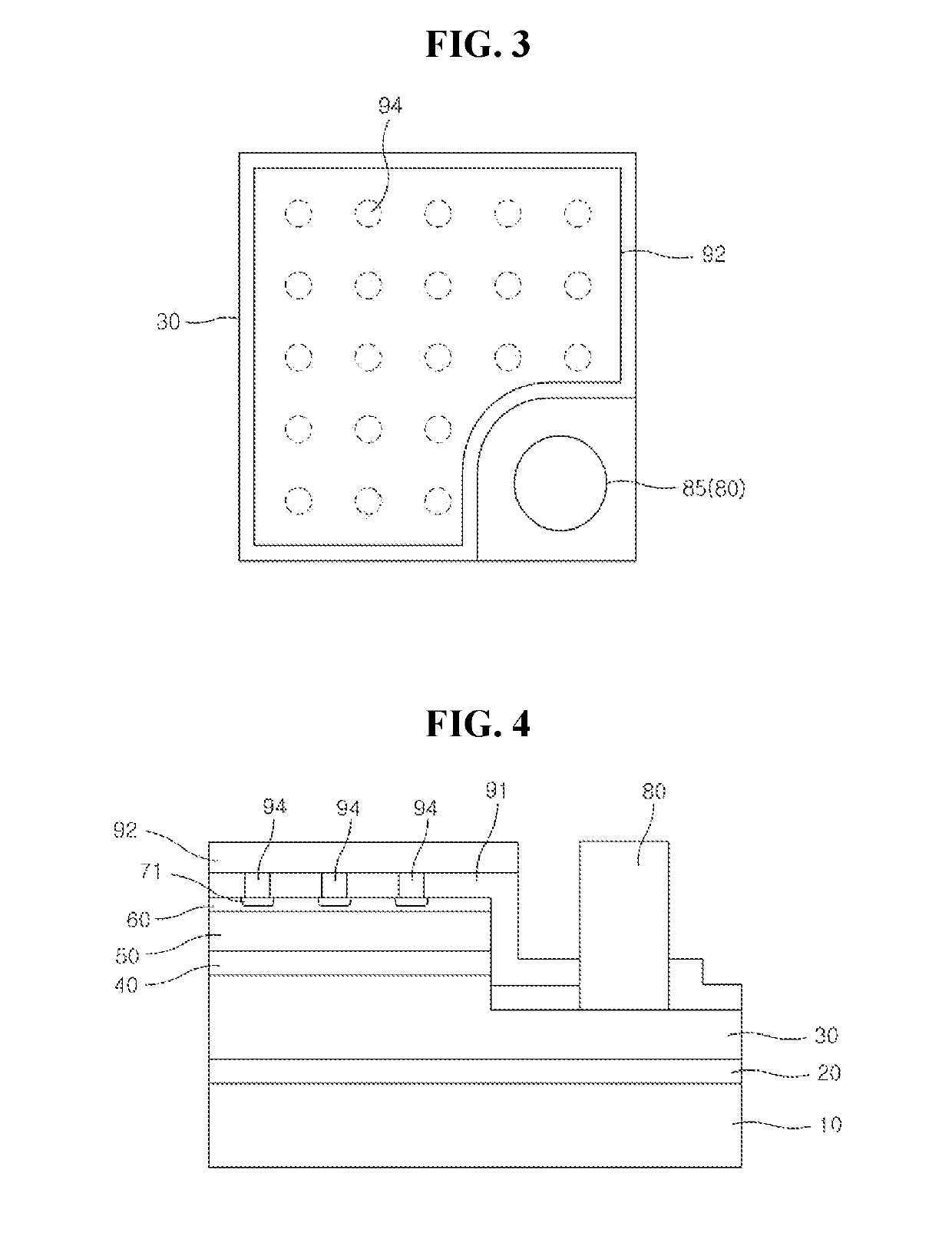Semiconductor light emitting diode
a light-emitting diode and semiconductor technology, applied in the direction of basic electric elements, electrical appliances, semiconductor devices, etc., can solve the problems of emerging major problems such as luminous efficiency, and achieve the maximum luminous efficiency excellent light-emitting characteristics of the semiconductor light-emitting diode, and increase conductivity
- Summary
- Abstract
- Description
- Claims
- Application Information
AI Technical Summary
Benefits of technology
Problems solved by technology
Method used
Image
Examples
first embodiment
[0041]FIG. 1 is a cross-sectional view of a semiconductor light emitting diode according to the present invention and FIG. 2 illustrates enlarged cross-sectional views for explaining structures in which interconnection electrodes 94 are connected to a transparent electrode 60 in FIG. 1.
[0042]As illustrated in FIGS. 1 and 2, the first embodiment of the semiconductor light emitting diode according to the present invention may include a substrate 10, a buffer layer 20, an n-type semiconductor layer as a first conductive semiconductor layer 30, an active layer 40, a p-type semiconductor layer as a second conductive semiconductor layer 50, a transparent electrode 60, ohmic contact layers 71, an n-type bonding pad 85, a non-conductive reflection film 91 having via-holes 91-3, and a reflective electrode 92.
[0043]The substrate 10 is usually composed of sapphire (Al2O3), SiC, Si, GaN or glass. When the light emitting diode is of a flip type, the substrate 10 may be removed from the final str...
fourth embodiment
[0068]Referring to FIG. 6, a description will be given concerning the semiconductor light emitting diode according to the present invention.
[0069]FIG. 6 is a cross-sectional view of a fourth embodiment of the semiconductor light emitting diode according to the present invention. Unlike the first embodiment, the fourth embodiment further includes connection electrodes 70. As illustrated in FIG. 6, each of the connection electrodes 70 may include the ohmic contact layer 71. Alternatively, each of the connection electrodes 70 may be the ohmic contact layer 71. In the fourth embodiment, the transparent electrode 60 and the connection electrodes 70 are sequentially formed and the uppermost layers of the connection electrodes 70 form the ohmic contact layers 71, which are in direct contact with the interconnection electrodes 94.
fifth embodiment
[0070]Referring to FIGS. 7 and 8, a description will be given concerning the semiconductor light emitting diode according to the present invention.
[0071]Specifically, FIGS. 7 and 8 are cross-sectional and plan views of a fifth embodiment of the semiconductor light emitting diode according to the present invention, respectively.
[0072]The same reference numerals are given to the same elements in the fifth embodiment as those in the first to fourth embodiments, and thus a description thereof is omitted.
[0073]The fifth embodiment is distinguished from the first to fourth embodiments in that n-type electrodes 82 are engaged with the interconnection electrodes 94. For this arrangement, the semiconductor light emitting diode of the present invention includes an n-type electrode unit, as illustrated in FIG. 7. The n-type electrode unit 80 may be formed on the first conductive semiconductor layer 30 after removal of portions of the active layer 40, the second conductive semiconductor layer 5...
PUM
 Login to View More
Login to View More Abstract
Description
Claims
Application Information
 Login to View More
Login to View More - R&D
- Intellectual Property
- Life Sciences
- Materials
- Tech Scout
- Unparalleled Data Quality
- Higher Quality Content
- 60% Fewer Hallucinations
Browse by: Latest US Patents, China's latest patents, Technical Efficacy Thesaurus, Application Domain, Technology Topic, Popular Technical Reports.
© 2025 PatSnap. All rights reserved.Legal|Privacy policy|Modern Slavery Act Transparency Statement|Sitemap|About US| Contact US: help@patsnap.com



